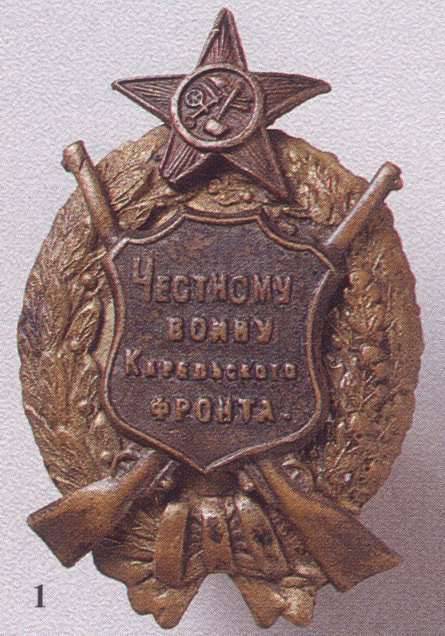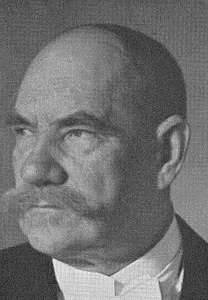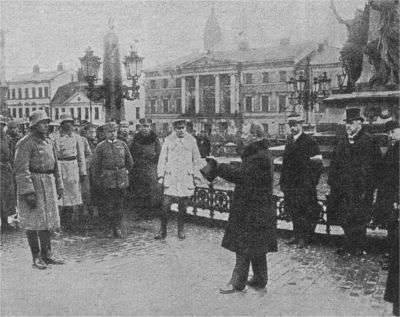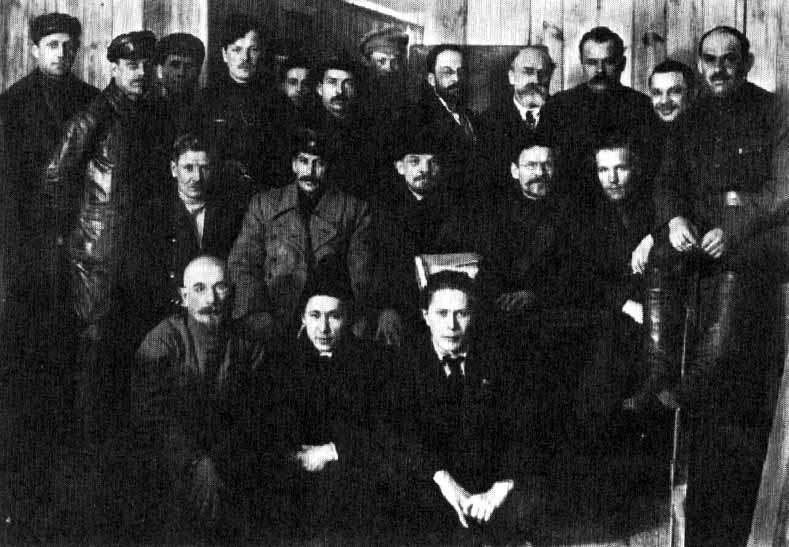A piece of forests and marshes

26 November 1939 of the year in 15 h. 45 min. Finnish artillery shelled the positions of the 68 Infantry Regiment in the area of the village of Mainila. Four Soviet soldiers were killed. An 20 implicitly smoldering conflict between neighboring states has finally emerged. The war between the USSR and Finland became inevitable.
6 December 1917, the Finnish Seym, unilaterally declared its independence from Russia. December 31 of the same year V.I. Lenin signed a decree of the Council of People's Commissars on the recognition of Finnish independence, which was personally served on the Prime Minister of the newly formed state of Per, Evindou Svinhodududu. By order of the Council of People's Commissars, a commission was created to work out joint decisions on the settlement of property, civil and territorial issues in which it was supposed to include representatives of the Finnish side. However, the Soviet government could not assume that the country, which had just received sovereignty from their hands, was not going to sit down at the negotiating table, but would try by any means, including armed aggression, to profit from the former metropolis. The rulers of the newly baked state did not want to separate from Russia within the borders of the Grand Duchy of Finland. Taking advantage of the weakening of the central government in the country, almost the day after independence, the Finnish leadership decided to increase its territory at the expense of Ingermanlandia (present Leningrad Region), Karelia and the Kola Peninsula under the specious pretext of “gathering all Finnish peoples under one roof”.
By the beginning of 1918, the collapse of the Russian army, demoralized by previous events, reached its apogee. The 42 Russian Corps, stationed in Finland since 1915, was few in number, the soldiers did not want to serve, and in every way they tried to go home as quickly as possible. Separate subdivisions, loyal to military duty, by all means tried to save military depots, objects and state property of the former Russian empire, as well as protect the property and lives of numerous Russian people subjected to brutal persecution in the light of the growing anti-Russian hysteria.
10 January 1918 in Finland first clashes between armed detachments of workers and workers (security units, originally intended to maintain public order in the absence of the police), which subsequently led to the beginning of a full-scale civil war in the country. The commander of the sützkor squad, from 12 in January 1918, recognized by the Finnish Seym as "government troops", was received by the former general of the Russian Imperial Army, Karl Gustav Mannerheim.

At the end of January, 1918, in Helsingfors (Helsinki), the Red Guard detachments in response to the active terrorist actions of the white Finns seized the central institutions, as well as the Sejm building. The bourgeois government of Svinhouvud fled to Nikolastadt (Vasa). As a result of the successful actions of the Red Guard units under the authority of the Council of People's Commissioners (SNU) created by 28 in January 1918, the entire south of the country turned out to be. The north and the central part remained under the rule of the white Finns.
Thus, in Finland, two states were formed: a republic led by the SNU and a formally proclaimed monarchy under the direction of regent Svinhovud, who led the German prince Friedrich Karl of Hesse on behalf of the guest to the throne of Finland.
1 March 1918 in Smolny Lenin and Vice-Premier of the Finnish Socialist Worker Republic Edward Polling signed the “Treaty on the Strengthening of Friendship and Fraternity between the RSFSR and the FSRR”. Of course, the Soviet government was sympathetic to the red Finns, but for objective reasons, it could not really help them. With an acute shortage of weapons to the newly formed Red Army, the CPC could still distinguish the Finnish Red Guard detachments 10 thousand rifles, 35 guns and 10 three-inch guns, and to send a volunteer detachment in the number 1450 people to participate in the defense of the village Rautu (now Pine) an important strategic point. Other councils bound hand and foot by the conditions of the “prepohabious” Brest world, the Soviets could not render red to the Finns. With about 100 of thousands of people in its structure, the armed forces of the FSRD could independently do away with their adversary, but a third party intervened. Frightened by the popular movement, the government of Svinhuvuda-Mannerheim turned to Kaiser Germany for help. Sending his representative, Senator E. Elta, to Berlin, Svinhuvud almost begged him: “Arrange for the Germans to come here. Otherwise we will not cope. " March 7 The German-Finnish contract for the introduction of troops was signed, but even before it was signed, the 27 th Jäger battalion, battling Russian troops near Riga, was transferred from Germany through Sweden to the Vasa city area. This battalion was the frame of the emerging Belofin army. In April, the German Expeditionary Force, commanded by Lieutenant-General Rüdiger von der Goltz, landed in Finland 1918 in Finland, and from May of that year became the de facto commander-in-chief of all the armed forces of the country. This was the beginning of the end of the FSRR: the semi-guerrilla Red Guard units could not fight on equal terms against the German regular troops.

On the night of April 14, 1918, under the joint attack of the German paratroopers and the White Finns, fell Helsingfors. By the end of April, the combined forces of the Germans and the white Finns managed to surround the red Finns and force them to surrender. The Finnish Civil War ended in a victory for the reaction. Soon after the capture of Helsingfors, Abo and other cities, the latter-day winners began mass repressions against their political opponents and the Russian population. Russian warships were taken under armed guard by German troops, and commercial ships belonging to Russian merchants and businessmen were captured and looted. Groundless arrests of Russian sailors and officers began, Russian citizens were forced to leave Finland as soon as possible, not only by the arbitrariness of the authorities, but also by public harassment, insults, and complete lack of rights. In particular, the day after the capture of Helsingfors, 15 on April 1918, the city was posted announcements of the White command of the proposed urgent forcible eviction of all Russian subjects. The winners did not stop in front of outright terror, for example in Vyborg they shot several dozen Russian officers and students of local gymnasiums who had nothing to do with the armed confrontation between the Red and White Finns.
At the height of the raging Civil War, March 7, the head of the Finnish government regent Svinhovud put forward an official statement that the Finnish government was ready to make peace with Soviet Russia (by the way, no one had declared war on the RSFSR on their part), that is, Karelia, a part of the Murmansk railway and the Kola Peninsula should have moved to Finland. However, the aggressive appetites of the Finnish elite were not supported even by their ally. 8 in March, Kaiser Wilhelm II officially announced that Germany would not wage war with the Soviets for Finnish interests and would not support them if hostilities were moved beyond the territory of the former Grand Duchy. However, despite the negative reaction of the German leadership, 15 in March, Mannerheim approves of the “Wallenius Plan”, suggesting the seizure of a part of the territory of the former Russian Empire along the Petsamo (Pechenga) –Kola Peninsula – White Sea – Onega Lake –Svir – Lake Ladoga line. Mannerheim also put forward the idea of seizing Petrograd and turning it into a “free city” of the Danzig type, but the Germans strongly opposed this. Only thanks to the strongest pressure of the German side, which reasonably believed that the seizure of the former capital of the empire would lead to unpredictable consequences, the “march on Petrograd” was canceled. Nevertheless, the expansionist policy of the Finnish authorities regarding the border lands of Russia continued. On the borders with Soviet Russia concentrated 50-thousandth army, well armed and well trained. “To implement the plan of attack on Russia, all men are called up from 18 to 40 years. They are trained by so-called huntsmen in the number of 5000 people who arrived from Germany. The campaign to Russia will be carried out without declaring war by individual detachments in 3-5 thousand people together with German and Swedish volunteers, ”the report of the Chief of the Naval General Staff of Soviet Russia dated 22 on April 1918 said about this. On March 18, a puppet "Provisional Committee for Eastern Karelia" was created in the village of Ukhta, occupied by Finnish troops, which decided on the accession of Karelia to Finland.

The landing of the German troops in Finland and its appearance on the German side caused serious concern among the Entente countries. At the request of the Soviet government, British troops were brought into Murmansk to protect the military assets that had accumulated there and to protect the Murmansk railway.
In April, 1918, the Finnish military stepped up its actions. A large detachment of White Finns launched an attack on the Pechenga. The British reacted promptly. Admiral Kemp sent the cruiser Cochrane with a detachment of Red Guards from Murmansk to Pechenga, which was based on the sailors of the Russian cruiser Askold. Together with a small division of the British, they managed to repel two assaults undertaken by the Finns 11 and 12 in May 1918. Red Guard and Allied detachments were also sent to other menacing sites, in particular, a detachment of 150 English marines arrived in Kandalaksha.
In central Karelia, in early April, the Finns launched an offensive against Kem. The military council of the city declared the county under siege, mobilizing the male population from 18 to 42 years into the militia. Part of the defenders of the city joined the part of the Red Finns and groups of railway workers armed with revolvers and hunting rifles. The icebreaker Mikula Selyaninovich, urgently sent by the Russian authorities, managed to break through the ice and bring the long-awaited weapon, ammunition and reinforcements. After several days of fierce fighting, the aggressors, led into battle by the German colonel Malmö, were defeated and driven back to the west. The losses of the Finns, according to domestic sources, only killed more than 100 people.
The Soviet government continued to take decisive measures to counteract the penetration of Finnish armed units into the territory of the RSFSR. By an order of April 18, 1918, the Military Council of the Petrograd District, the head of the "Northern Section of the Veil" was ordered to strengthen the border sections of the territory, and was tasked with forming a border division from the local population loyal to Soviet power. Baltic warships were sent to Lake Onega and Ladoga fleet, including several submarines, was intensively used for patrolling aviation. Regular units of the Red Army were transferred from the central regions of Russia to Karelia. These actions, as well as the increasing pressure of the Entente countries on Finland, de jure being an ally of Germany, slightly cooled the heads of hot Finnish guys. By the summer of 1918, active hostilities were stopped in Karelia. In June-July, preliminary negotiations between the RSFSR and Finland on a ceasefire and demarcation of the border began. The Finns made a proposal to transfer the borders on the Karelian Isthmus farther from Petrograd, in return demanding territories in East Karelia, including the city of Olonets. Ironically, this draft agreement was a copy of what Stalin would offer the Finns in 1939.

From 3 to 27 in August, official negotiations began between the Kingdom of Finland in Berlin, and Suomi’s country became 18 in August 1918, and the delegation of Soviet Russia. The Soviet delegation was headed by Vaclav Vorovski, the Finnish delegation was headed by Foreign Minister Karl Enkel. The negotiations did not yield positive results mainly because of the tough position of the Germans, who ultimately demanded that the Finns moderate their appetites, stop the armed attacks on the neighboring side, and also gave Russia firm guarantees of its territorial integrity. Despite the formal cessation of hostilities, a company of Finns under the command of Ensign Walte Sario 15 on October 1918 of the year occupied the Rebol volost in Eastern Karelia. The war began to flare up again.
To be continued ...
Information